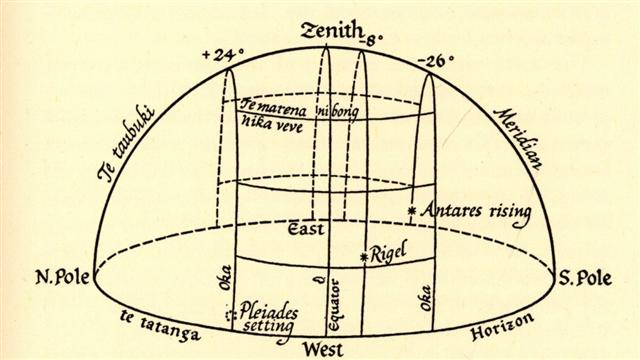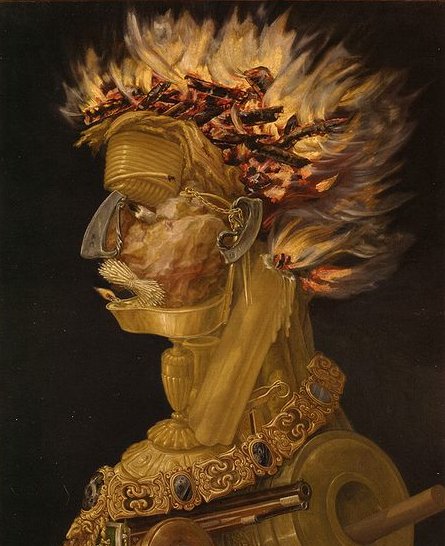Metoro frequently used the word koia and for a long time I was unable to understand what he meant. However, I have just discovered in my wordlist that koia appears among the examples of mama (otherwise this word is not present anywhere in my list):
Koia is probably similar in meaning to such common conjunctions as our 'and', which explains why Metoro used it so often. In line Ca1 there are three instances:
Ca1-1 has a single figure formed by uniting (koia) a pair of signs. Considering the date March 22 Metoro could have thought of autumn equinox on Easter Island as a day when summer (presumably imagined at left) is joined (koia) to winter (at right). One reason for choosing March 22 instead of March 21 as the beginning of the text could have been precisely this - to create a link of associations from the northern spring equinox to the southern spring equinox (which is in September 22). However, a better explanation is to recognize how time is measured - e.g. will the first birthday not appear until 1 year has passed since birth. March 22 is day number 1 from equinox. 26 glyphs in line Ca1 can be contrasted with 24 in line Cb1 and the idea could have been to give a hint that line Ca1 corresponds to the last part of southern 'land' and line Cb1 to the last part of 'land' in the northern hemisphere:  The running 'twins' in Ca1-16--17 are looking straight at us and possibly also they could allude to the transition from one 'hemisphere' to the other. Had there been only a single tagata standing looking at us it would probably have meant 'solstice', but now there is a pair running which could mean equinox (when Sun moves fast). In Ca1-17 the left and right elements are not united, yet Metoro said koia. The pair of elements are firmly joined, but remaining a pair; they are not united into a single entity. Metoro's expression ki te henua is structurally the same as ki te tai, but maybe opposite in meaning and, I guess, perhaps corresponding to 'towards land' (up) respectively 'towards sea' (down). Ki te henua ought to refer to the arrival to 'land', to the season of plenty (like when high tide subsides and reveals all the delicious foods for picking) and ki te tai could refer to the return voyage. My view derives from the Hawaiian Moon calendar. 'Low tide' is red in my table below and 'high tide' is black, and the last 4 nights are special, as if they belonged to the beginning of 'land' in the next month. In the original text Kane is explicitly said to be night 27 and Mauli night 29 (a fact which I have not disclosed earlier). Either night 26 is missing (which I have guessed below) or counting should begin with Muku as night 1. Number 26 was possibly all through Polynesia a symbol for the declination of Antares and then indirectly for the beginning of summer, when Sun would be present.
Therefore I guess Metoro could have meant Ca1-17 shows how after autumn equinox darkness descends on earth. The right part in Ca1-17 changes the normal light (life) sign of a henua type of glyph, because there are lines across. It could mean light is overcrossed, that it is 'night'. The rectangular sides of this 'dark' henua are straight and the 4 oblique lines across could refer to 4 months with the horizontal short line at the top for winter solstice, e.g. 4 * 30 + 5 = 125 dark nights (in contrast to 365 - 125 = 240 days of light). However, the pair of figures in Ca1-16--17 are running into the past (left), and the originator of the glyph text could have tried to visualize how in April 7 darkness north of the equator is quickly fading away. We must read the glyph text separately from reading the words of Metoro, yet they are parallel and have to be considered together. In Ca1-16 we can see the running figure has an aspect of producing 'fruit' (hua) and such a capacity cannot appear in spring. Offspring belong in autumn. Therefore this running figure could personify autumn. Mr. Autumn could also be depicted in Ca1-17, because in general appearance he looks the same.
It is not easy to understand ka hua. An autumn person could light fires (kŠ) because it grew dark but also in order to cook the 'fruits' of the year. The 'Fruit Man' is running away, though, and in April this could refer to the circumstances north of the equator, because late in winter food is running scarce. At the same time south of the equator and in the late hot central season of the year, the 'Fire Man', would have to leave, resulting in 4 dark months ahead. Archimboldo has pictured both a Fruit Man and a Fire Man:
Life depends not only on sweet water originating from the clouds of heaven in form of rain but also on hot Sun for the necessary warmth and light without which nothing would grow, and these apparently quite different phenomena are united, two sides of the same coin. As OgotemmÍli explained it: ... 'The rays drink up the little waters of the earth, the shallow pools, making them rise, and then descend again in rain.' Then, leaving aside the question of water, he summed up his argument: 'To draw up and then return what one had drawn - that is the life of the world.' We can in Ca1-16 perceive half a rain (ua) sign drawn as the curved 3 fingers followed by the thumb which develops into hua:
For 'fruits' (hua) it is necessary with rain (ua). The bottom half of ua is changed into hua. In Ca1-16 the right foot is cut short, which resembles how north of the equator Tyr lost his right hand in the mouth of the Wolf. The hemisphere south of the equator is located below the waist (equator) of the Sun person. Number 16 represents 'Father Light' (Jupiter) and number 17 Venus, the planet of birth. In Ca1-17 the outline of the running figure at left is not drawn complete, a Sign of 'not present for real' ('just a figure of speech'), and indeed Sun cannot be alive in the night. Therefore the left part of the glyph cannot be joined to the right part. All these imaginations of mine seem to give some support for the translations of Metoro, viz. that light is departing (for an observer on Easter Island). But the glyph text evidently could have the opposite meaning, viz. how light arrives beyond the northern spring equinox. |






